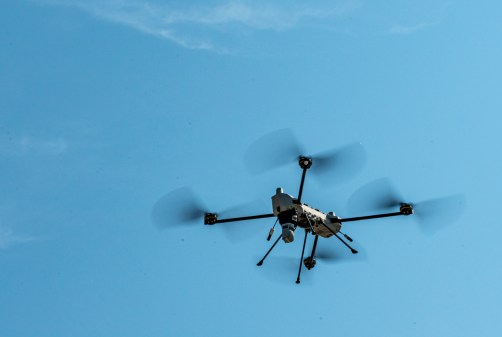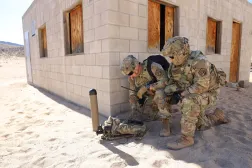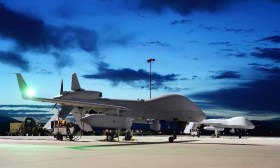Army puts its ‘transforming in contact’ concept to biggest test yet
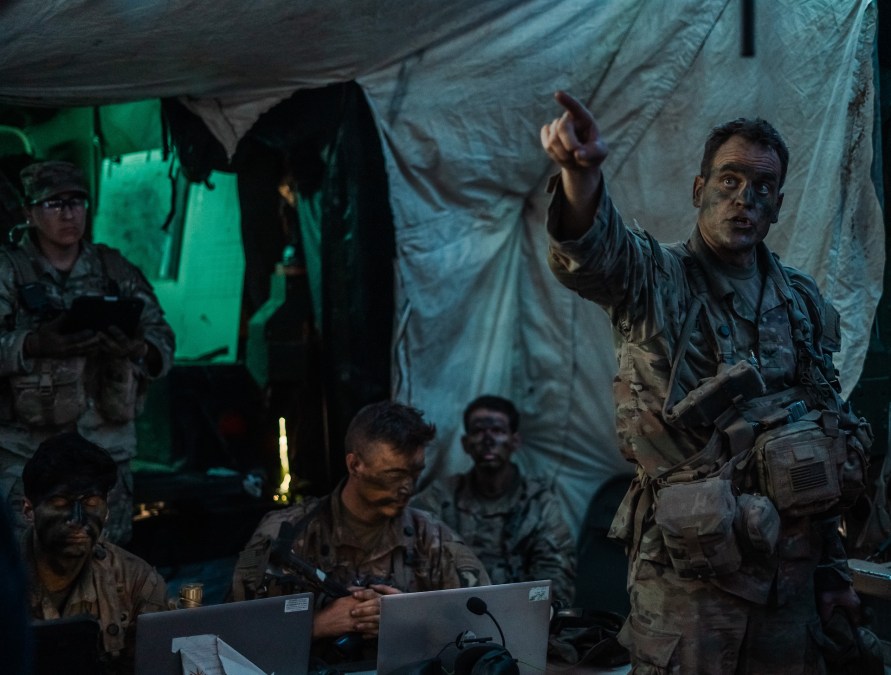
FORT JOHNSON, La. — It seemed like a long shot: soldiers using small drones with MacGyvered tech that cost less than $100 to serve as decoys to divert the attention of a highly capable enemy.
During a recent area defense operation, an Army unit had two possible paths it needed to take. With the opposition force closely following, the unit deployed around 50 decoys — commercial raspberry pi’s available for hobbyists on Amazon with SSID cards. The technology allowed the unit to load electronic signatures for anything from the brigade’s command post to a commander’s cell phone and mount it on small drones with a power supply, in an attempt to draw away the adversary.
As a result, the enemy spent about 50 percent of its artillery targeting what it thought was the Army unit, but in fact, was just dirt, making the foe not only easier to find for the Army forces given it exposed its position with its artillery, but it expended valuable munitions for naught.
While the Army has an annual procurement budget that exceeds $20 billion, it was this type of jerry-rigged tech that created a tactical advantage on the battlefield, much to the surprise of senior commanders.
“The thing that surprised me was actually the effectiveness of the decoys that were put out … I underestimated, personally, the effectiveness that we would see out there. It really did create some real dilemmas for [the enemy] during this fight,” Maj. Gen. Brett Sylvia, commander of the 101st Airbourne Division, told reporters during a trip to the Joint Readiness Training Center at Fort Johnson, Louisiana. “A tactical advantage there, because he has to unmask his guns in order to be able to execute that fire mission.”
What made this such an impressive feat was that it was done successfully at a combat training center rotation — the most realistic combat scenarios the Army can create for units to train — against 1st Battalion, 509th Infantry Regiment, know as “Geronimo” and serving as a highly capable opponent for units rotating into these centers, rather than just a home-station training event.
This type of bottom-up innovation is exactly what Chief of Staff Gen. Randy George is trying to foster with the so-called transforming-in-contact concept, where the service plans to use deployments and troop rotations to test new equipment — mainly commercial off-the-shelf gear — that could allow units to be more responsive on a dynamic battlefield.
According to George, there are three areas where the Army needs to be faster and more adaptable when it comes to delivering equipment to forces, due to how challenging the threat environment is and the cat-and-mouse aspect of countering opponents’ moves: unmanned aerial systems, counter-UAS and electronic warfare.
The concept has roots in the Middle East where troops weren’t getting the latest and greatest equipment, due to pre-determined unit fielding decisions. The thinking was, if a unit is deploying to a high-risk theater, they should be getting new equipment. Moreover, lessons from the war in Ukraine have demonstrated that the constant action-counteraction between both sides means forces must be more adaptable in contact with the enemy to innovate, especially given the rate of development of commercial technology.
The transforming-in-contact units include: 2nd Brigade, 101st Airborne Division — the first mobile brigade combat team — 3rd Brigade, 10th Mountain Division and 2nd Brigade, 25th Infantry Division.
The concept was put to one of its biggest tests this month where 2nd Brigade, 101st conducted a rotation at JRTC. George called this transforming-in-contact 1.0, with 2nd Brigade, 25th Infantry Division having a planned rotation in October in Hawaii and 3rd Brigade, 10th Mountain Division having a planned rotation in January in Europe.
The goal is to continue to foster innovation from soldiers while testing equipment in different environments to ensure they work. George noted that technology the Army sent to the Middle East didn’t perform as well in the Philippines due to the high humidity in that region.
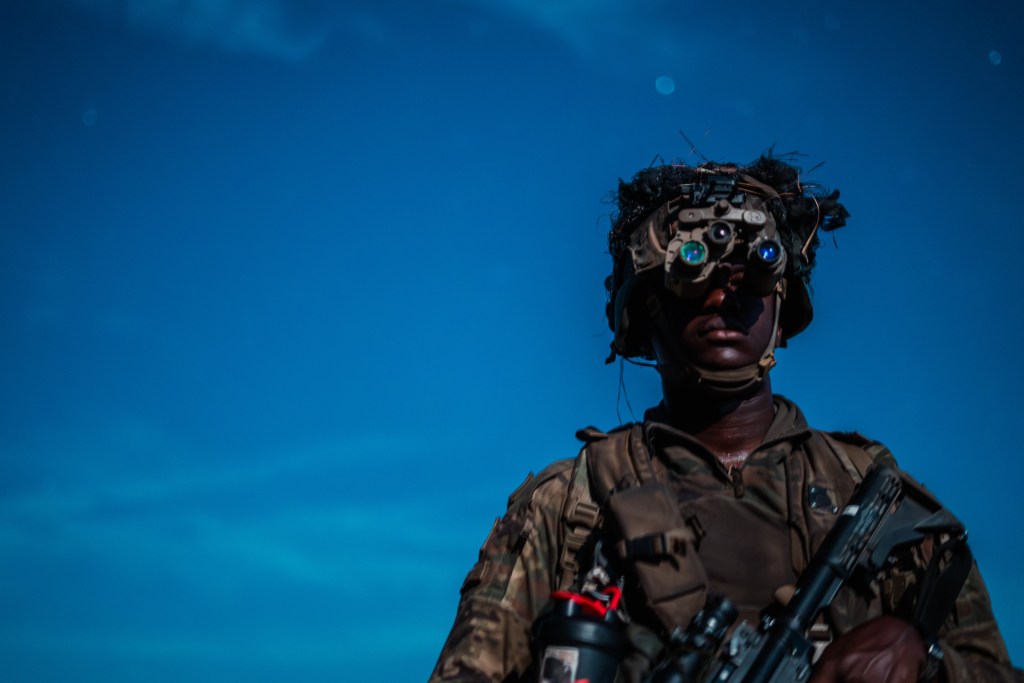
Senior Army leadership is flipping the script and allowing bottom-up innovation to help drive change and traditional processes such as capability requirements and acquisition of new systems that to date have mostly been top-down.
Former officials explained that there was constant innovation during the wars of Iraq and Afghanistan because the terrain or the tactics the enemy was using would adapt rapidly. The Army is now allowing division commanders to let their units tailor themselves how they need to in order to prosecute the fight, either by creating new organizations, purchasing low-cost equipment to employ in new and creative ways or using different tactics.
Officials explained that in the past, units would generate a requirement based on a gap, send that to the enterprise, which would work that in a lab and undergo a rigorous design-and-testing process before getting it back to the unit. Now, the Army is trying to take capabilities before full maturity, let soldiers use them and provide more accurate feedback regarding how it could be used or identify additional, better-informed gaps that need to be addressed.
“I’ve called it in the past a quiet revolution that we don’t have to field the same capabilities to every unit and that we can upgrade in different portfolios over time. Transformation-in-contact is designed to help us serve as a pathfinder to get there. It is giving us an opportunity to take a handful of operational units and experiment really with how they will use the new tech, whether it’s tactical UAVs, ground robots, other EW systems in an operational environment and what works, what doesn’t work,” Gabe Camarillo, undersecretary of the Army, told reporters in early August. That will help inform development of tactics, techniques, procedures, concepts of operation, requirements, solicitations and acquisition strategies, he added.
Camarillo noted that intelligence, surveillance and reconnaissance is a good example of that because it traditionally required a lot of specialized training, but operations in Ukraine have demonstrated the ease of ubiquitous ISR with low-cost and low-training systems like small drones.
As technology evolves to become more intuitive and easy to use, the Army is finding that it doesn’t need to give soldiers new gear months in advance to test and train on it. Instead, they can give it to troops weeks ahead and let them innovate with it.
For example, new electronic warfare systems — namely the Terrestrial Layer System Manpack, the first official program in decades for a dismounted electronic attack capability that soldiers can use to conduct jamming on-the-move as well as direction and signal finding with limited signals intelligence capabilities — was given to soldiers about two weeks before JRTC, whereas in the past, those systems would require specialized training and take soldiers away from their units.
The same goes for newer network and communications equipment where more intuitive systems means the program office can give kit to units on a tighter timeline, whereas historically, they would have to provide a longer lead time so the units could train on it and get used to it before using it in an exercise.
The Army is also gaining valuable lessons from Geronimo, the opposing force at JRTC, as well as other similar units at other combat training centers. That organization is constantly sharing information back and forth to help the Army evolve, with one prominent example being the raspberry pi’s mounted to drones to serve as decoys and surveil electronic signatures in the battlespace.
“We get to do this every month. We get to do a rotation against the best free-thinking enemy in the world every month, the United States Army, against our own RTU teammates,” Lt. Col. Mason Thornal, commander of 1st Battalion, 509th Infantry Regiment, said. “We get to implement capabilities and we get to develop tactics, techniques and procedures for new capabilities that are coming out in the Army. And we’re trying to share these things that we’re learning with our rotational unit teammates as we go along.”
He noted that his unit has had to make adjustments on the battlefield relative to 2nd Brigade, 101st and the new equipment they have as part of the transforming-in-contact concept.
For example, he said the unit now has a lot more sensing capability, meaning his opposing force had to serialize their movements on the battlefield so that it would be harder to identify its main efforts. This has made them slower and as a result, they missed some opportunities to isolate and destroy a battalion that they identified.
500-mile air assault
As part of its rotation at JRTC, 2nd Brigade, 101st Airborne conducted a roughly 500-mile air assault from its home at Fort Campbell, Kentucky, to Louisiana to start the exercise.
During that effort, it had upgraded communications equipment — part of the Army’s integrated tactical network, a combination of program-of-record systems and commercial off-the-shelf tools.
That included putting HMS manpack radios — the same that are used by dismounted soldiers — into helicopters, providing MUOS beyond-line-of-sight satellite communications. Previously, those aircraft only had chat functions and could only send position location information.
Those capabilities provided continuous and more robust communications tools to the unit for the entire 500-mile entry into JRTC.
The Army’s network team has been on a multiyear journey to modernize tactical communications and make units lighter, faster, smaller and able to pass and share more information. Those efforts were ahead of their time in many instances as they employed the rapid feedback loop that transforming-in-contact is striving for, with one official saying they are “very comfortable” with this tight linkage and feedback mechanism.
Throughout this years-long process, modernized equipment has significantly shrunk the size of command posts. A key lesson from Ukraine is the need to have smaller, more mobile command posts to avoid being targeted.
2nd Brigade’s command post was significantly smaller than those of the past with just a couple of trucks — instead of large, sprawling, and often relatively static outposts. The Army shrunk the number of people from about 30 in previous rotations — and in some cases 60 to 70 — to around eight people.
It also had a much smaller electromagnetic signature, near zero, thanks to the “antenna farm” that produced all the communications for the brigade command post and was dispersed physically from the main command post, whereas before it was co-located.
While the farm did have a signature, communications capabilities such as directional radios and proliferated low-Earth orbit satellites made it difficult for the adversary to discover it in the spectrum, unlike other capabilities such as WiFi or high-frequency systems.
The foe was not able to distinguish if this was a brigade command post or a lower echelon given the small footprint and lower electromagnetic signature. Now, the enemy has to be more discretionary in terms of deciding what to hit because they don’t want to waste artillery or give away their position on a smaller echelon. They’re looking for bigger payoffs like a brigade or division command post.
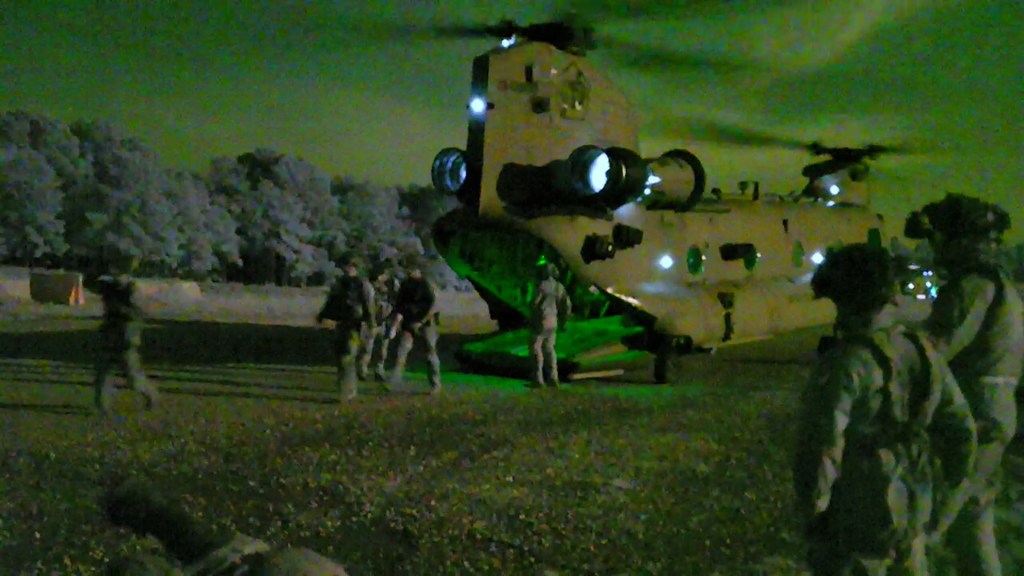
“The bottom line is, you put that antenna farm … well away from the actual command post and so then you are, if you’re disciplined with WiFi pucks and phones and watches and all that kind of stuff, then truly, that place where the — where all the humans are sitting is nearly undetectable when you have the snipers up above,” Sylvia said.
In fact, feedback that made its way to Army Cyber Command head Lt. Gen. Maria Barrett was that the brigade’s signature was the best seen in 38 rotations, she said at the TechNet Augusta conference in Georgia Aug. 22.
One of the key examples for commanders enabling subordinate soldiers to tailor to how they need to is the multifunctional reconnaissance company, or MFRC. It’s a prototype formation that grew out of both cooperation with Geronimo — which has a similar unit — as well as lessons from the Ranger Regiment. With the Army’s changes in force structure released in February, certain capabilities are being moved up to division. This unit is meant to retain some of those capabilities resident within the brigade.
It has “the task of being painfully light and disproportionately lethal in order to sense, kill and protect on behalf of the brigade. How we’re getting after those three lines effort: traditional reconnaissance, emerging technology, and then some homegrown EW capabilities,” Capt. Charles O’Hagan, the company’s commander, said.
Officials said the unit is a bit of back-to-the-future regarding how the Army used to do long-range reconnaissance, operating stealthily on the battlefield and acting as scouts to find enemy positions.
“The fact that the opposition force knew that they were out there and couldn’t find them, created some dilemmas for him in terms of his ability to be as aggressive as he would have liked. He had to be a little more timid, a little bit more deliberate and introduce his forces,” Sylvia said.
Making lasting change
Transforming-in-contact, while it has demonstrated many successes to date, still faces challenges given the Army is large and change takes time.
Top officials have explained the need for flexible funding authorities in order to purchase these lower-cost, smaller and more attritable systems.
“What I mean by agile funding is that we don’t have to buy one system. I talked about program of record. What we don’t want is to buy something and then say we’re going to have it for the next 20 years, because when I asked that question this morning they said, ‘Yeah, we got a new UAS this year because it’s better, more modular, longer endurance,’” George told reporters.
He noted that officials don’t want to always worry about quantities and they desire the ability to buy something new when it’s available.
George also addressed issues of scaling this across the entire force. Scaling these technologies and concepts will be much harder, to include how to do home-station training, because some capabilities will be challenged at home station to fully train with.
“We have to figure out how we’re going to train all of these systems at home station. We’re going to have to figure out how we can put UAS up and do all the things that we need to do to adapt,” he said.
George dismissed major concerns related to integration of these technologies, saying soldiers are innovators and will be able to figure out that part.
“This isn’t about just the tech. This is about the formations. This is about the people,” he told reporters. “Do we have the right people at the right locations, with the right skills?”
The Army wants to ensure the right expertise is resident in each unit and formation to enable the types of coding, quick fixes and technical innovation to instill the lessons being drawn out by these experimental units in the future.
Other key questions the Army is trying to answer related to scaling is what is the official number of low-cost technology — from small drones to even raspberry pi’s — that a unit requires and is authorized, something referred to in military parlance as Modified Table of Organization and Equipment, or MTOE.
“We need to have the flexibility of units [where] you have a certain number of UAS. That’s why we’re talking about low cost to be able to train. That’s why we’re talking about modular. It gets added and making those adjustments,” George said.
The ultimate goal is to become more modular in which sensors and systems can be taken off a piece of hardware and placed on another if there’s an advancement or a new platform is a better host for technology, with George offering the analogy to rails on an M4 rifle.
“We’ll have to be nimble. I think we can use tech to actually do that. I always think about Walmart that can inventory a huge, large, passively, that system that we can do that … You can train with a lot of this stuff and then have some of the higher-end stuff that you saw with what’s available,” he said.
Officials also need to ensure the lessons are captured for doctrine and training given this will have wide-sweeping implications for how capabilities are employed and how units operate on the battlefield.
“We had our G3 down here, G8 and everybody else is that we understand process-wise, in the building, what the frictions are at every level and everybody’s doing their piece to understand,” George said. “How is this going to impact this level of formation in the field — not what’s best for the program or all those other things or what’s easiest or what is going to make the biggest difference at this level. That’s our culture that we have to change here to match this culture down there.”
